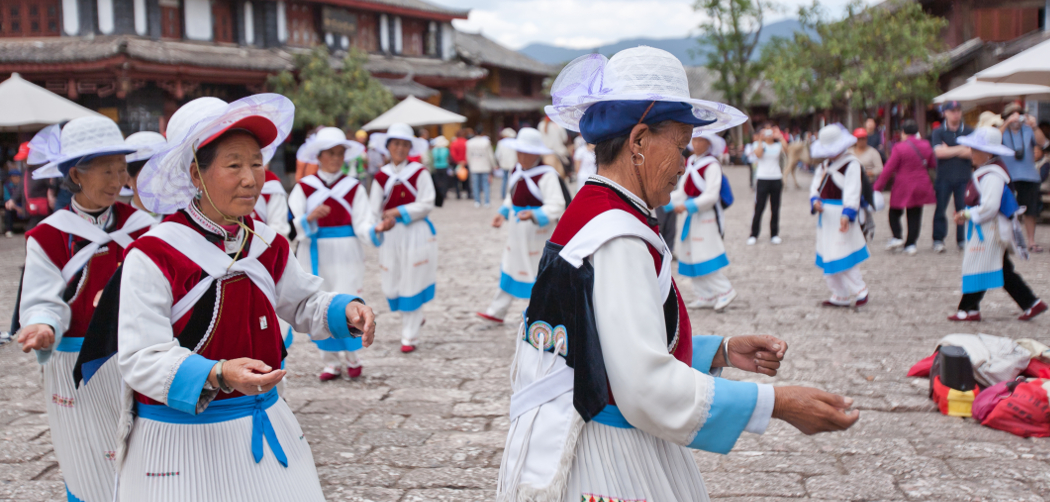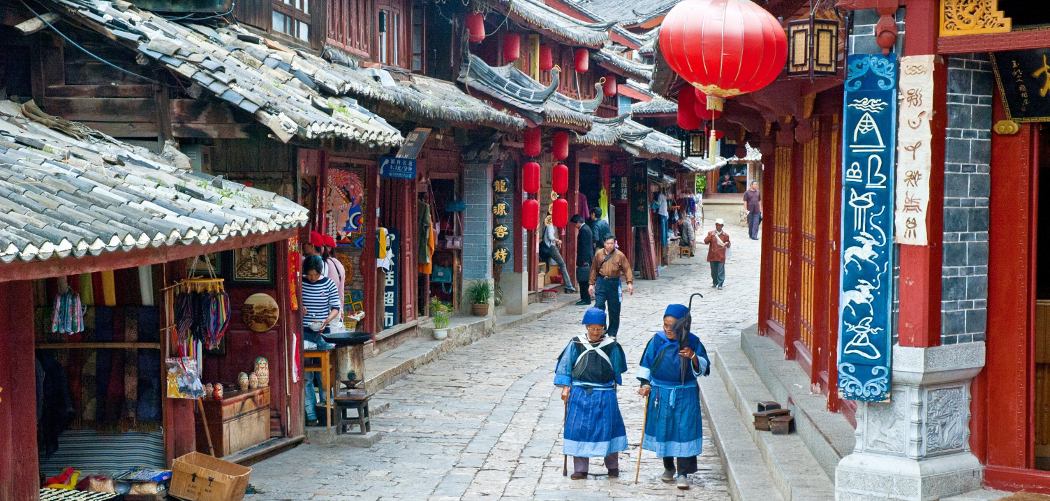The Naxi minority of Lijiang

Population and geographic distribution
Naxi has a population of 309,000 in Lijiang prefecture and all of northern Yunnan.
Language and writing
Their language belongs to the Tibetan-Burmese family. Already in the seventh century, the Naxi had two types of writing: one pictographic, the Dongba and the other, syllabic, Koba from Tibetan.
History
Far away relatives of Tibetans, the Naxi are originally a pastoral people who settled down. At the time of the Nanzhao kingdom of Dali, the Naxi region is undergoing great development. The Naxi Kingdom of Lijiang became in the eleventh century, under the Ming, thanks to the Mu kings, an economic, political and cultural center with the flourishing of the Dongba religion. It is only today, after the earthquake of 1997 and restoration works, that Lijiang has become known around the world, under the name of the small “Venice of Yunnan”.
Religion
Dongba priests convey the history, literature and religion of the Naxi people. They are attached to the Tibetan Good cult and practice divination and ritual dances. It is a religion without a temple, with ceremonies practiced during festivals and festivals.

Feasts and festivals of the Naxi in Lijiang
The Naxi love to dance and sing, they have many parties. Their main festivals are:
- The “Bangbang” fair or farm tools festival in January, combined with horse racing (15th day of the first lunar month).
- The festival of the God Sanduo: dances, picnic, horse race (8th day of the second lunar month): One of the most famous and traditional festivals is the “Sanduo” Festival, it is also called “er yue ba” temple fair. Sanduo is the primary God among the Naxi ethnic groups. During the temple fair, huge crowds of people attend with the joss sticks for worshipping. According to the conventions, people who join the Sanduo temple fair have to completely clean their hands and go across the fire lit by the branches from the azaleas, in order to show the purification.
- Torch Festival in Lijiang (25th to 27th day of the 6th lunar month)
- The Mother Goddess Day Ganmu at Lugu Lake (25th day of the 7th lunar month): Sacrifices are performed at Lion Ganmu Mountain by Daba priests and llamas. Young people from villages in the region, dressed in their best clothes, go in procession to Lion’s Mountain and camp there. The next day there are horse races, picnics in the mountains, songs and dances. Then pilgrims walk around Lugu Lake in several groups, while llamas recite sutras during the procession around the lake.
Marriage customs
The Naxi were influenced by the Han. Formerly the marriage was arranged by a matchmaker. It is forbidden to marry in the same clan.
To be in love:
Teenagers from Naxi minority have their freedom to choose one’s spouse; therefore, not like the other minorities, most of them meet their lovers before the marriage. Unfortunately, according to the absolute social conventions, children’s spouses should be chosen by the parents (without asking their children’s will.) and, both families should be in the equal standing. For this reason, many of them cannot marry the one they loved. It caused some of the couples choose to commit suicide together in the name of love. Drowned, perished by fire, suicide by hanging or taking poison etc…they believed once they couldn’t get married in the world of mortals, they can achieve their wish and have the perfect happiness after they died. These phenomenons happened till 50’s to 60’s.